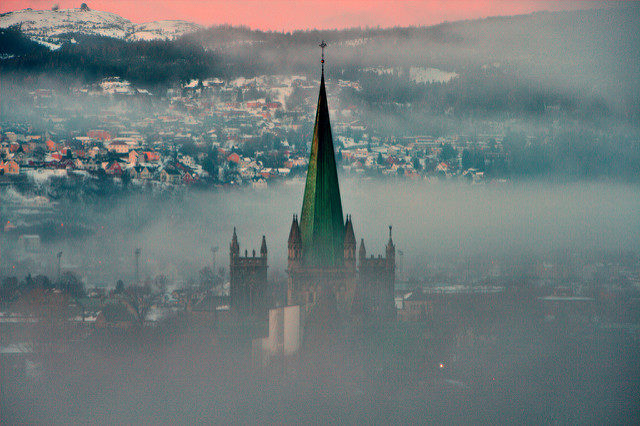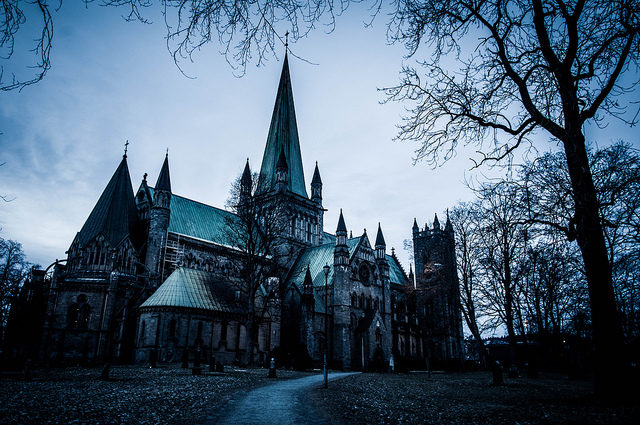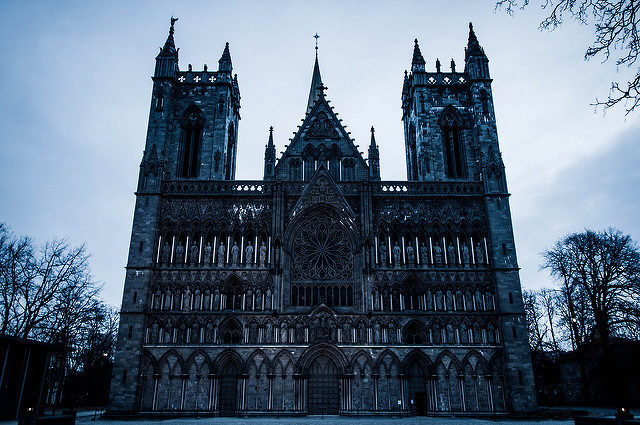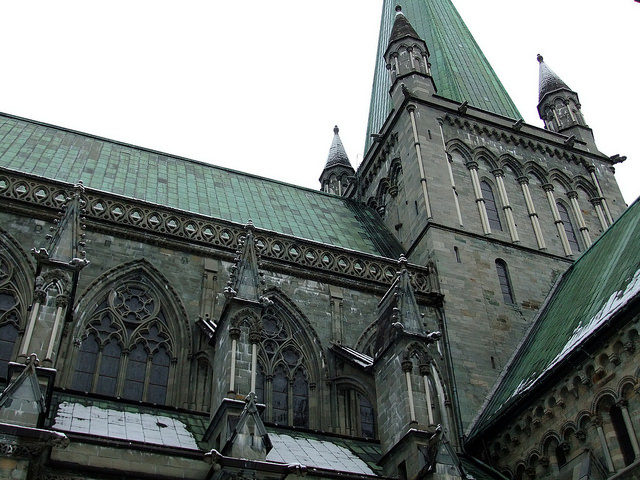Nidaros Cathedral is a Church of Norway cathedral located in Trondheim, Norway. It is the largest medieval building in Scandinavia and the most important church in Norway.
It was built from 1070 to 1300 over the burial site of Saint Olav, the king of Norway in the 11th century, who became the patron saint of the nation. It was designed as the cathedral for the Diocese of Nidaros in 1152 and is the northernmost medieval cathedral in the world.


The cathedral was taken from the Roman Catholics by the Lutheran Church in 1537, after the Protestant Reformation. It was badly damaged by fires in 1327 and again in 1531. The nave was destroyed and was not rebuilt until the restoration in the early 1900s. In 1708, the church burned down completely, except for the stone walls.
It was struck by lightning in 1719, and was again ravaged by fire. In 1869, the architect Heinrich Ernst Schimer started a major rebuilding and restoration and it was officially completed in 2001.


The octagon, with its surrounding ambulatory, is the oldest part of the cathedral. This was the site of the original high altar, with the reliquary casket of Saint Olav, and choir. It is believed that the design of the octagon may have been inspired by the Corona of Canterbury Cathedral and the choir shows English influence and appears to have been modeled after the Angel Choir of Lincoln Cathedral.

The present cathedral has two principal altars, the first one is at the east end of the chancel in the octagon and behind it stood the silver reliquary casket containing the remains of Saint Olav. This silver reliquary was melted down for coinage by Christian II and Saint Olav’s remains were buried in an unknown location under the cathedral.
The original reliquary casket was in the form of a church, with dragon heads on its gables. The current altar was designed to recall in marble sculpture the essential elements from this reliquary casket. It replaces the previous baroque altar, which was transferred to Var Frue Church.

In 1930, two organs were installed in the Cathedral. The main one was built by the Steinmeyer firm and was erected in the north transept. It was commissioned in 1930 for the 900th anniversary of the Battle of Stiklestad.
The organ was funded mostly by donations, particularly by Elias Anton Cappelen Smith. Today, the cathedral is a popular tourist attraction and is the site of the observation of Olav’s Wake, which is a festival dedicated to Saint Olav’s death at the Battle of Stiklestad.
